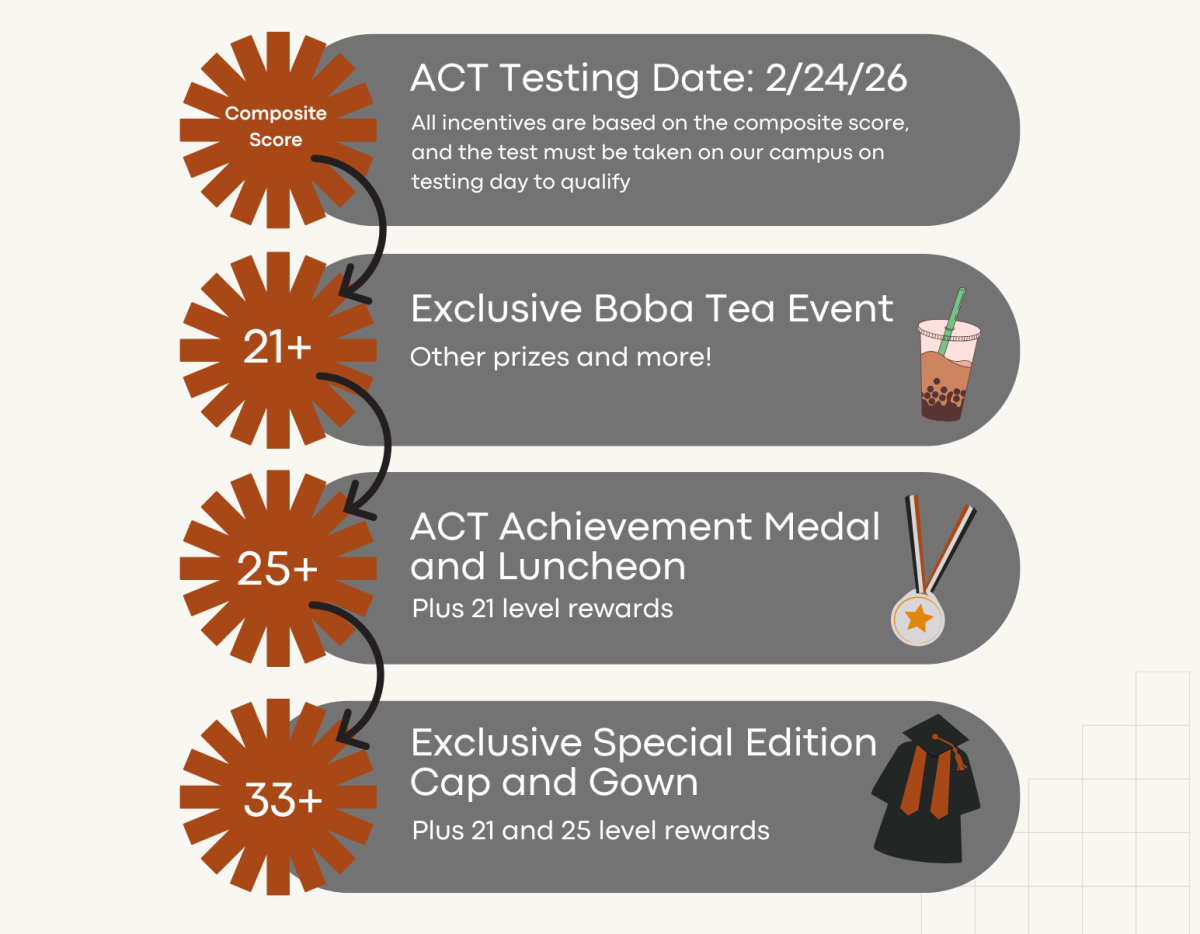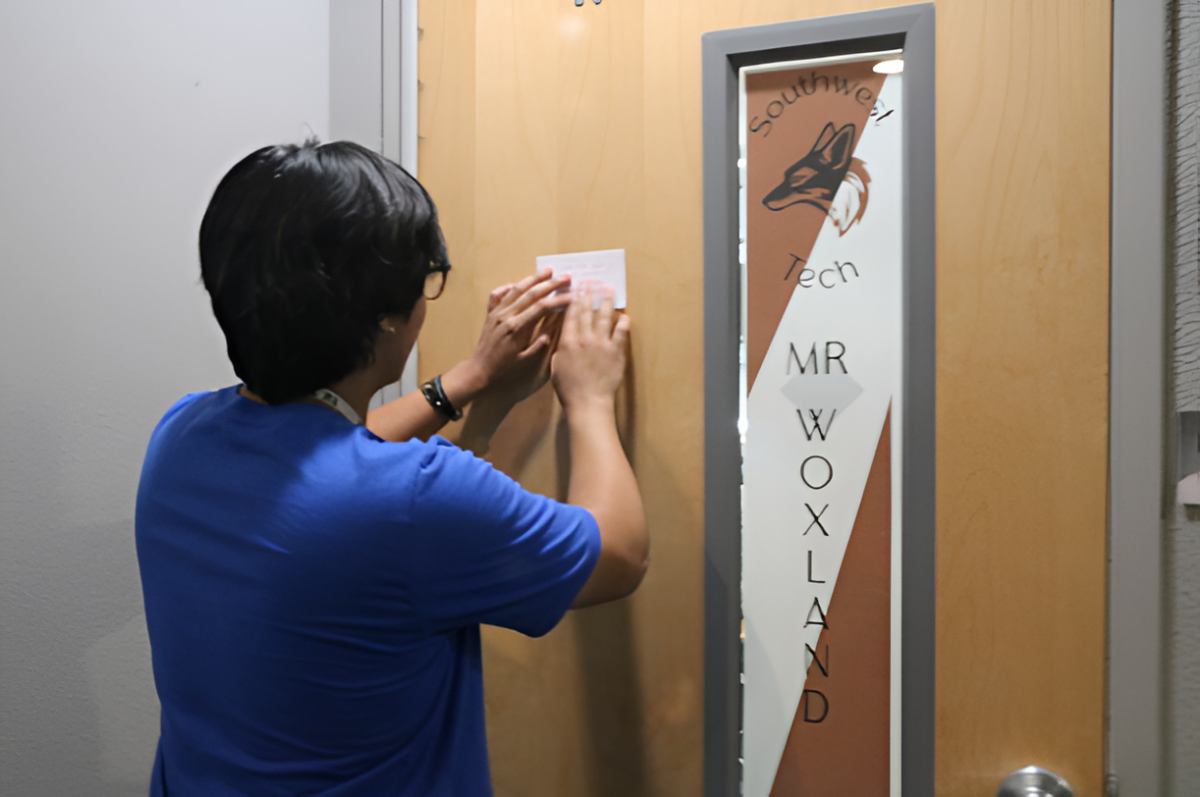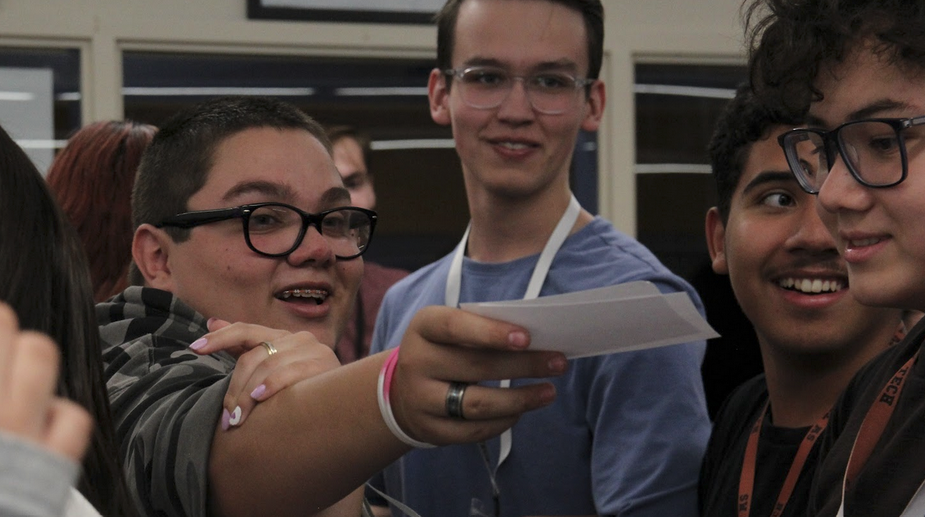Since the beginning of the 2025 school year, students in Engineering II have been attempting to fix the broken electric kart in the Engineering lab.
“I was able to get in contact with the guy who bought the kart for the school when it opened in 2009,” senior Connor Wiggins said. “It was a kit that was put together, and there would be a race around campus. Then, it became a senior project. Every year, the engineering teacher would disassemble the kart, and then the seniors would put it together. If they did it right, they’d get to drive it. If they didn’t, it would catch on fire. [But], when COVID-19 hit, it sat dead in the Engineering lab in F building for two years [before] my junior year, when it was moved to the Engineering lab in D building, which is where another senior and I found it.”
Interested students came together at least twice a week to make improvements on their project.
“We have touched on the basics of electrical work,” sophomore Christian Reyes said. “But here, we are actually able to apply some of the things we’ve learned and learn even more than we would have in the classroom. [Personally], I think it’s one thing to learn it in the classroom and do stuff on paper, but it’s another thing to actually do it in the real world.”
Towards the end of November, new parts were ordered to replace the old ones.
“One thing we realized is that we spent the whole first half of the year overcomplicating the mechanisms and the electronics,” sophomore Makoa Apao said. “[So], instead, we just started fresh, which helped put us on the right path. We had to order some buttons, switches, and lights, but the rest of it was provided by the school’s Engineering program. We used what we learned from Mr. Suba by studying the electronic diagrams, and ended up making something that worked really well and fit into the kart perfectly.”
After months of hard work, the kart is finally able to start properly.
“It’s been really fun, although the setbacks were demotivating [at first],” Reyes said. “But, I have a lot of hope that in the end, this will all turn out to be worth it. It’s just nice to have something to look forward to during Engineering when things get boring. Our teachers’ aides, such as Sahib Ratan and Connor Wiggins, have also taught us so much about electrical work, like adding the LEDs, resistors, and all kinds of voltages.”
With their creation, the team hopes to be able to show it off at future school events.
“We’re definitely going to try to improve the kart before using it in events,” Apao said. “But, we also want to use it for events like Trunk or Treat, or as a way to encourage students who want to come to Southwest. One thing we’re planning on doing is collaborating with one of the clubs and integrating the kart into whatever their theme is. There’s definitely some tuning that needs to be done in terms of safety, so [as of] right now, only I and a couple of other select individuals are permitted to ride it.”
This hands-on project has given Wiggins a chance to improve his engineering abilities, persuading him to pursue the field after graduation.
“[After high school], I’ve been accepted for mechanical engineering at the University of Nevada, Reno, where they also have an electric vehicle racing program,” Wiggins said. “You [are expected] to develop an open wheel all electric kart that could go from zero to sixty [in speed] in three and a half seconds flat, and then you test it and drive around a track. They also have a gasoline version, where you can drive it on dirt. I’m very excited to [get involved] and see if I either make it or crash. We’ll find out.”

![Inspecting the kart, sophomores Makoa Apao and Christian Reyes make some slight adjustments to the build. The project has been led by senior Connor Wiggins. “I really like the original framework of [the kart],” sophomore Makoa Apao said. “I feel like when they originally designed it, the kart was really well built, and I really appreciate the craftsmanship on it. [Through our work], we've implemented keyhole systems to restrict access to it. We've also implemented LEDs as an underglow.”](https://southwestshadow.com/wp-content/uploads/2025/04/IMG_1006-1200x900.jpg)
![Working in the Student Success Office, Attendance Secretary Lordis Depiazza inputs a student’s absence excuse note. Students are required to bring an excuse note to the attendance office within three days of any absence. “Reminding students that being in school is important because it reflects towards your grades and being able to do any activities with the school,” Depiazza said. “[It] seems to get the students' attention about wanting to be in school.”](https://southwestshadow.com/wp-content/uploads/2025/10/IMG_8313-1200x800.jpg)
![Arranging the fabric on the floor for a new project, senior Sapphyre-Ann Leung plans out her attire for the next deadline. With the recent closures, students now had limited resources and less margin for error with the fabric and materials they had in stock while trying to reach strict deadlines. “Joann’s had a lot of high-end fabric for our fashion competitions,” Leung said. “We couldn’t just buy ten yards of fabric from Hobby Lobby or Walmart. Since [Joann Fabrics] is no longer open, we have to buy items online, which is way more expensive.”](https://southwestshadow.com/wp-content/uploads/2025/10/IMG_0038-1200x800.jpg)


![Practicing the basic skills of nursing, sophomore Natalia Yancey gets her heartbeat checked with a stethoscope. Sophomore nursing students reviewed skills from freshman year. “I’ve always wanted to be in the medical field; it’s been my dream forever,” Yancey said. “Doing [practice skills] so early on is not only an amazing opportunity, but it helps me to prepare for my future.”](https://southwestshadow.com/wp-content/uploads/2025/10/IMG_9843-1200x800.jpg)

Makoa • Apr 30, 2025 at
Amazing work Johnny thank you 🙏